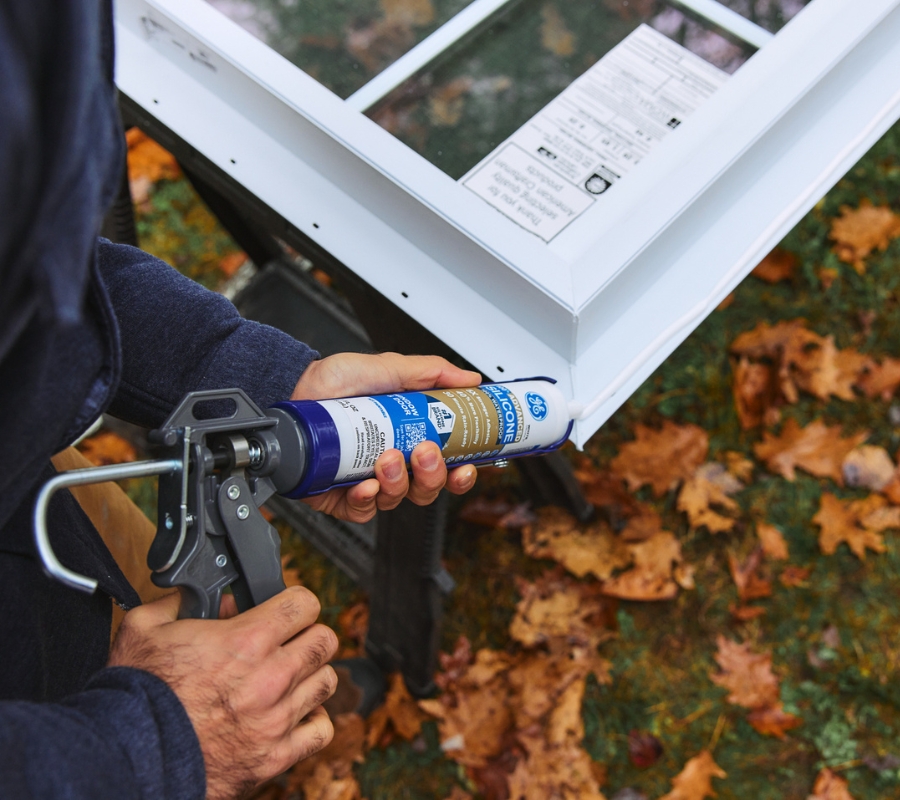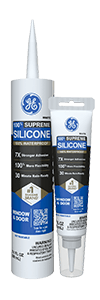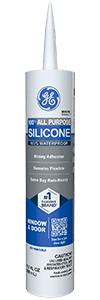Note: This DIY article is provided as a general guide only and is not intended to take the place of product-specific installation procedures; always follow applicable manufacturers’ instructions. Depending on your home’s age and condition, location within the home, and other potential factors, repairs and/or upgrades or other services may be necessary prior to the beginning and/or completion of your project that may involve the services of a home improvement professional. This article does not include advice pertaining to local building codes and/or any related inspections.
This article explores why silicone sealants have been the industry standard for longevity and durability for home renovation and professional construction projects worldwide.
The chemical composition of silicone sealants
Whether you’re sealing a bathroom fixture or bonding metal surfaces, silicone sealants have proven their worth. To answer the question “Why are silicone sealants considered the best choice for filling gaps?” we should first start by understanding their chemical composition.
A silicone sealant mainly consists of silicone polymers (polysiloxanes) whose core is a repeating chain of silicone and oxygen atoms with organic groups attached to the silicone atoms.
Depending on the silicone sealant’s specific chemical formula and purpose, fumed silica (to enhance properties like viscosity and durability), plasticizers, cross-linking agents, and coupling agents may be present.
Other surface adhesives employ other materials as their primary ingredients. In caulk, for example, the primary ingredient is acrylic, while in foam, the primary ingredient is polyurethane foam.
Curing of silicone sealants
The silicone sealant curing process directly impacts the strength of the bond achieved and the type of surface that can be bonded. Most sealants cure in either of two processes depending on the nature of the byproducts released:
- Acid-cure silicone sealants (also known as acetoxy sealants)
- Neutral-cure silicone sealants
Acid-cure silicone sealant
Acid-cure sealants are named so because of the acidic byproducts released while the sealant cures. The curing process begins with a reaction between the silicone sealant (usually of a gel-like consistency) and moisture in the air, releasing acidic byproducts.
The acidic byproducts include acetic acid, the active ingredient in vinegar, resulting in a vinegary scent during curing.
Neutral-cure silicone sealant
Contrary to acid-cure silicone sealant, neutral-cure sealant produces chemically neutral products during curing. These neutral products include alcohol and oxime and are usually non-corrosive and non-tarnishing, features that make neutral silicone sealant applicable to most metal and non-metal surfaces.
Why silicone sealants outperform other types of sealants
Caulk, polyurethane foam, butyl rubber, and silicone sealants all have their place in construction adhesives. However, in many cases, the preferred product is silicone sealants. Below are some of the silicone sealant benefits to remember.
Flexibility and movement accommodation
Some parts of your project require more flexibility than others. Highly moist areas and those that experience extreme temperature variation are all subject to a degree of movement secondary to the expansive effects of heat and moisture. When working on HVAC units, window or door frames, or sealing around roofs, you will appreciate flexibility in your chosen surface adhesive.
While different types of silicone sealants offer varying degrees of flexibility, all offer superior flexibility over polyurethane foam and acrylic caulk, which compromise adhesion strength when exposed to tensile forces. When using silicone sealants, you don’t have to worry about your adhesive peeling off when the house settles.

Waterproofing
Are you thinking about sealing that gap in your window or door but are worried that water or moisture might damage it? Are you interested in protecting the tiles in your kitchen backsplash but are concerned that the water from all the cooking and cleaning might take its toll? Do you need to seal the glass and tiles in your bathroom? Silicone sealants provide a quick and easy solution for all of these questions.
Whether you’re working outdoors or indoors, silicone sealants provide excellent waterproofing solutions as long as water needs to stay on one side.
Adhesives such as caulk should not be used in high-moisture environments as their seal eventually becomes compromised.
Temperature and weather resistance
Any adhesive is complicated by freezing and steaming temperatures. To accommodate such temperature extremes, the adhesive must be capable of maintaining its structural and functional integrity with high-temperature fluctuations.

High-temperature silicone sealants exhibit this temperature resilience, a feature that has made them a staple in automotive, aerospace, and home use. Additionally, weather resistance properties such as resistance to UV degradation, temperature stability, and waterproofing highlight the superiority of silicone sealants.
Despite their advantage of being paintable, materials such as acrylic caulk have the drawback of poor weather resistance.
Longevity and durability
Yellowing, crinkling, peeling, and even cracking are some natural processes associated with aging other adhesives, including organic ones. However, with silicone sealants, you can rest assured that the bond will last as long as the surface is applied and used correctly. Routine maintenance procedures don’t have to be on your calendar when you go the extra mile and choose the best surface adhesive for your project.
Variety of applications
Are you tired of remembering which surface adhesive applies to which surface types? Then, you could benefit from the versatility of silicone sealants. These sealants come in various colors, facilitating an aesthetic finish to any home renovation or construction project.
Alternatively, clear silicone sealant can be applied to a colored surface to blend in with the surrounding paint for a professional finish.
When to use adhesives other than silicone sealant
It is well-established that silicone sealant reigns supreme in the construction industry. However, you might incur more damage by applying silicone sealant than other alternatives in some cases. Such cases include:
- Significant gaps: Filling large gaps, cracks, and cavities requires an approach capable of instilling some structural integrity. In this case, silicone sealant is insufficient. Additionally, foam is the better adhesive when thermal and sound insulation are essential.
- Paint-needing surfaces: Whenever you apply a surface adhesive to an area you expect to paint over (especially if it’s indoors and away from moisture), you may consider caulk as a second-tier alternative to paintable silicone sealant.
Silicone sealant has made its mark on the construction industry, offering a quick, easy, and long-lasting solution to many home renovation and construction projects. Despite the innovation of alternative surface adhesive options, silicone sealant continues to dominate the industry.
The reliance of professionals and DIYers on silicone sealant is not unfounded and is based on the flexibility, longevity, and durability it offers to any project. When in need of silicone sealants for your next project, find a store near you in the US or a store near you in Canada.


